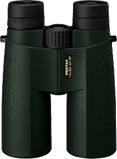Milkweeds
(Asclepias spp.)
Overview • Description • Distribution • Taxonomy

Overview
Asclepias is a very large genus of perennial flowering plants. There are more than 200 species worldwide, at least 76 species in North America north of Mexico, and 14 species in Minnesota. The common name “milkweed” refers to the white milky sap. The sap contains cardiac glycosides, and most species are poisonous. Milkweeds are the hosts for monarch butterfly larva. The genus is named after the Greek god of healing, Asclepius.
Description
Milkweeds have opposite or whorled leaves on short leaf stalks; milky latex; inflorescences of umbel-like, many-flowered cymes; and a complex flower structure consisting on an erect cup surrounding, in most species, a prolonged horn.
Distribution |
||
|
Sources Biodiversity occurrence data published by: Minnesota Biodiversity Atlas (accessed through the Minnesota Biodiversity Atlas Portal, bellatlas.umn.edu, 11/21/2025). |
|
| 11/21/2025 | ||
Taxonomy
Kingdom
Division
Tracheophyta (Vascular Plants)
Subdivision
Spermatophytina (Seed Plants)
Class
Order
Gentianales (Gentians, Dogbanes, Madders, and Allies)
Family
Apocynaceae (dogbane)
Subfamily
Asclepiadoideae (milkweeds)
Tribe
Asclepiadeae
Subtribe
Asclepiadinae
Subordinate Taxa
butterfly weed (Asclepias tuberosa ssp. interior) ![]()
clasping milkweed (Asclepias amplexicaulis) ![]()
common milkweed (Asclepias syriaca) ![]()
four-leaved milkweed (Asclepias quadrifolia)
green milkweed (Asclepias viridiflora) ![]()
narrow-leaved milkweed (Asclepias stenophylla) ![]()
oval-leaf milkweed (Asclepias ovalifolia) ![]()
poke milkweed (Asclepias exaltata) ![]()
prairie milkweed (Asclepias hirtella) ![]()
purple milkweed (Asclepias purpurascens) ![]()
showy milkweed (Asclepias speciosa) ![]()
Sullivant’s milkweed (Asclepias sullivantii) ![]()
swamp milkweed (Asclepias incarnata ssp. incarnata) ![]()
whorled milkweed (Asclepias verticillata) ![]()
woolly milkweed (Asclepias lanuginosa) ![]()
Synonyms
Acerates
Acerotis
Aidomene
Anantherix
Anthanotis
Asclepiodella
Asclepiodora
Biventraria
Crassa
Dassovia
Odontostelma
Oligoron
Onistis
Otanema
Otaria
Oxypteryx
Podostemma
Podostigma
Polyotus
Schizonotus
Solanoa
Solanoana
Stylandra
Trachycalymma
Common Names
milkweeds
Visitor Photos
Share your photo of this plant.
This button not working for you?
Simply email us at info@MinnesotaSeasons.com.
Attach one or more photos and, if you like, a caption.
Dan W. Andree |
||
Milkweed...Pavia Unit... This was a small milkweed plant I just happened to notice at the NWR Pavia Unit. I was out there the afternoon of the 27th for a couple hours checking it out. My stupid camera time stamp stated 3 am etc. instead of pm. I guess I should have checked that, but oh well. 😄 That water hole still had a good amount of water in it and I seen some ducks in it. It had been dry and warm and windy before the cool down so I wondered if it would have any water in it and it did. The prairie restoration out there seems to be coming along pretty good. Would be interesting to see what its like next spring on. |
 |
|
Luciearl |
||
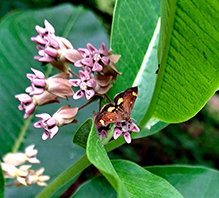 |
 |
|
Monarch caterpillar on milkweed. |
||
Unknown moth on milkweed. |
||
Monarch caterpillar on milkweed. |
||
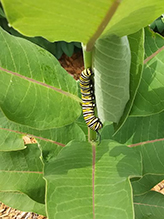 |
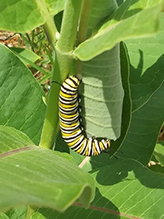 |
|
Alfredo Colon |
||
 |
 |
|
Robert Briggs |
 |
MinnesotaSeasons.com Photos
|

Slideshows
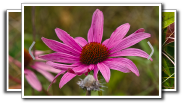
Visitor Videos
Share your video of this plant.
This button not working for you?
Simply email us at info@MinnesotaSeasons.com.
Attach a video, a YouTube link, or a cloud storage link.
Other Videos

Visitor Sightings
Report a sighting of this plant.
This button not working for you?
Simply email us at info@MinnesotaSeasons.com.
Be sure to include a location.
Dan W. Andree
10/27/2024

Location: Northern Tallgrass Prairie NWR, Pavia Unit
This was a small milkweed plant I just happened to notice at the NWR Pavia Unit. I was out there the afternoon of the 27th for a couple hours checking it out. My stupid camera time stamp stated 3 am etc. instead of pm. I guess I should have checked that, but oh well. 😄
That water hole still had a good amount of water in it and I seen some ducks in it. It had been dry and warm and windy before the cool down so I wondered if it would have any water in it and it did. The prairie restoration out there seems to be coming along pretty good. Would be interesting to see what its like next spring on.
MinnesotaSeasons.com Sightings
